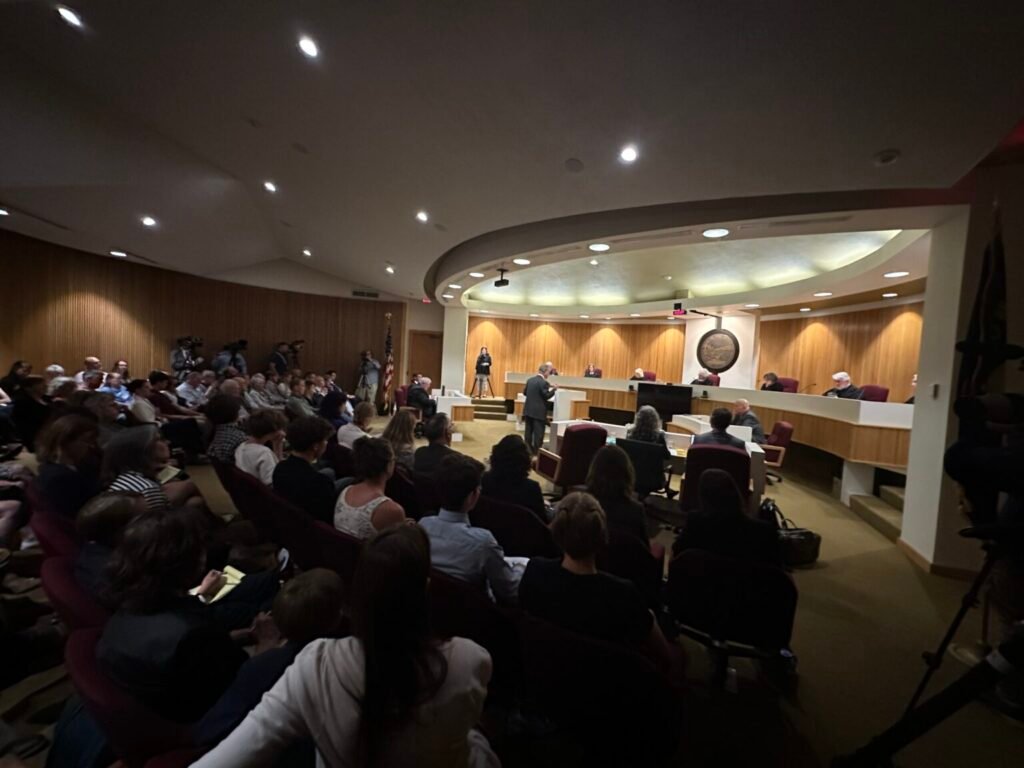In a packed courtroom in Helena, Montana, attorneys representing the 16 youth plaintiffs in Held v. State of Montana passionately presented oral arguments before the Montana Supreme Court. This landmark case, which began with a constitutional climate suit filed in March 2020, has garnered national attention for its implications on environmental policy and youth activism.
The core of the plaintiffs’ argument rests on their claim that Montana’s legislative and executive support for fossil fuel extraction directly contradicts the state constitution’s guarantee of a “clean and healthful environment.” They assert that these policies not only disregard the urgency of climate change but also infringe upon their fundamental rights to a livable climate, safety, and equal protection under the law.
Attorneys for the plaintiffs, including Roger Sullivan of McGarvey Law and Nate Bellinger of Our Children’s Trust, underscored the profound impacts of climate change on Montana’s landscapes and communities. They highlighted testimonies from the youth plaintiffs, who recounted personal experiences ranging from extreme summer heat affecting ranch work to disruptions in tribal traditions due to climate shifts.
Roger Sullivan framed the case as a pivotal moment for Montana’s future, stating, “This case is about Montana’s climate, Montana’s constitution, and Montana’s children.” He argued that the state’s restrictions under the Montana Environmental Policy Act (MEPA), which prevent consideration of climate impacts in permitting decisions, represent a systematic failure to uphold constitutional rights.
The plaintiffs’ legal team drew upon scientific testimony presented during the trial, which concluded with a landmark ruling by District Court Judge Kathy Seeley in August 2023. Judge Seeley’s decision, which declared Montana’s fossil fuel policies unconstitutional, marked a watershed moment as the first successful youth-led climate lawsuit in the United States.
Following Judge Seeley’s ruling, the state appealed to the Montana Supreme Court, seeking to overturn the decision and requesting a stay on further proceedings. However, Judge Seeley denied the state’s request for a stay, a decision upheld by the Montana Supreme Court, allowing the case to proceed without interruption pending appeal.
Nate Bellinger of Our Children’s Trust emphasized the urgency of the climate crisis and the need for systemic change, stating, “A decision in favor of Held plaintiffs would offer agencies the framework within which to make constitutionally compliant decisions, and position Montana to lead systemic change.” He urged the court to prioritize the well-being of Montana’s youth over the interests of the fossil fuel industry.
The Montana Supreme Court now faces a pivotal decision that could set precedent not only for Montana but also for similar climate cases nationwide. The justices have the opportunity to affirm Judge Seeley’s ruling, which established science-based protections for children’s rights in the face of climate change.
As Montana awaits the court’s decision, the outcome of Held v. State of Montana carries profound implications for environmental law, constitutional rights, and the future of youth activism. It represents a critical juncture in the intersection of legal advocacy, climate science, and governmental accountability, reflecting broader societal debates on environmental stewardship and intergenerational equity.
The Montana Supreme Court’s ruling, expected in the coming months, will undoubtedly shape the trajectory of climate litigation and advocacy efforts across the United States, reaffirming the power of young voices in demanding action on climate change and environmental justice.
What Happened During the Montana Youth Climate Trial? In a historic courtroom showdown in Helena, Montana, the fate of environmental policy and constitutional rights hung in the balance as the state faced off against 16 determined youth plaintiffs in Held v. State of Montana. This landmark case, the first of its kind in America, sought to challenge Montana’s stance on climate action under its constitutional obligation to ensure a “clean and healthful environment.”
The trial, which concluded recently, centered on whether Montana’s steadfast support for fossil fuels aligns with its constitutional duty. The plaintiffs, aged 5 to 22, argued passionately that the state’s policies, particularly those that ignore greenhouse gas emissions and climate impacts in project approvals, are fundamentally at odds with this obligation.
At the heart of the plaintiffs’ case was Montana’s restriction under the Montana Environmental Policy Act (MEPA), which prevents consideration of climate impacts both within and beyond the state’s borders. This limitation, they argued, not only undermines efforts to address climate change but also violates their rights to a healthy environment as guaranteed by the state constitution.
The proceedings were marked by stark contrasts in legal strategies and perspectives. The state’s defense portrayed the case as a mundane procedural matter, asserting that the plaintiffs’ grievances were better suited for legislative debate rather than judicial intervention. Assistant Attorney General Thane Johnson’s presentation, often stumbling over technical acronyms, underscored the state’s dismissive approach to the trial’s significance.
Throughout the trial, the plaintiffs painted a vivid picture of the personal and community impacts of climate change. Testimonies from youth plaintiffs highlighted the tangible effects on their lives, from concerns about disappearing snow sports to the emotional toll of witnessing environmental degradation firsthand. Their narratives formed a powerful backdrop to their legal arguments, emphasizing the urgent need for action.
Expert witnesses bolstered the plaintiffs’ case with data and analysis. They detailed Montana’s significant carbon footprint and argued persuasively that every ton of carbon dioxide emissions contributes to global climate change. The plaintiffs’ attorneys skillfully navigated through complex scientific evidence to underscore the severity of the issue and its direct relevance to Montana’s constitutional obligations.
In contrast, the state’s defense relied on a limited number of witnesses and procedural arguments, suggesting a reluctance to engage substantively with the environmental and constitutional questions at stake. Key officials from Montana’s Department of Environmental Quality (DEQ) testified that their hands were tied by legislative mandates, revealing a regulatory environment that critics describe as a rubber stamp for fossil fuel projects.
As the trial drew to a close, plaintiffs’ attorneys made a compelling case for judicial intervention. They called for the court to declare Montana’s MEPA limitation unconstitutional and to establish clear standards for future environmental reviews that include robust consideration of climate impacts.
The judge, Kathy Seeley, now faces a critical decision. Her ruling, expected later this summer, could set a precedent not only for Montana but for similar cases across the country. The outcome will hinge on whether the court believes that a favorable judgment could influence the state’s conduct, alleviate plaintiffs’ injuries, and pave the way for a more transparent and accountable environmental policy.
Regardless of the verdict, the Montana Youth Climate Trial has already made history by elevating the voices of young activists and highlighting the intersection of constitutional rights and environmental stewardship. It stands as a testament to the power of grassroots movements in confronting pressing global challenges and holding governments accountable for their actions.
As the world awaits Judge Seeley’s decision, the impact of this trial resonates far beyond Montana’s borders, inspiring similar efforts to address climate change through legal avenues and reaffirming the rights of future generations to inherit a sustainable planet.


